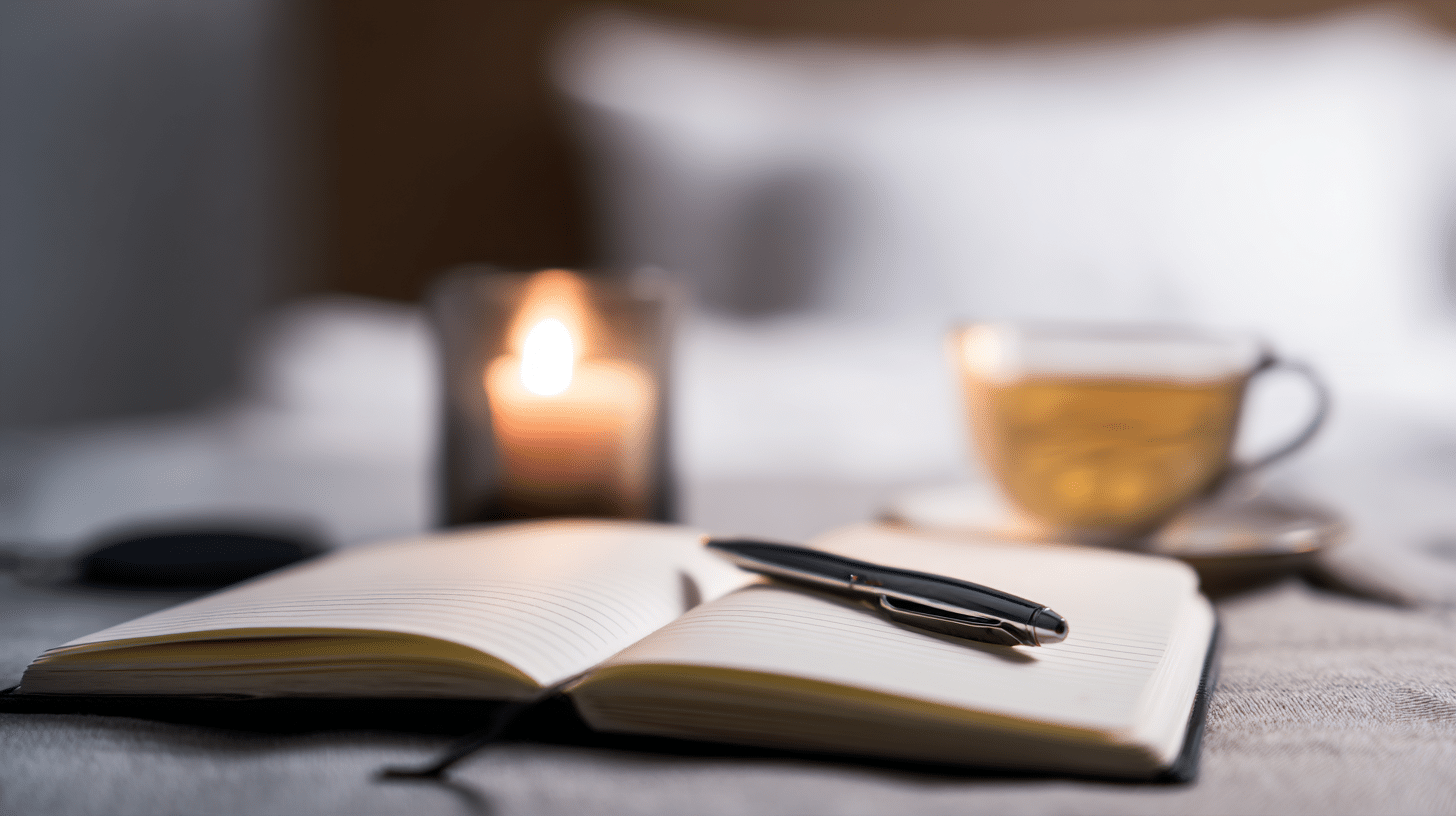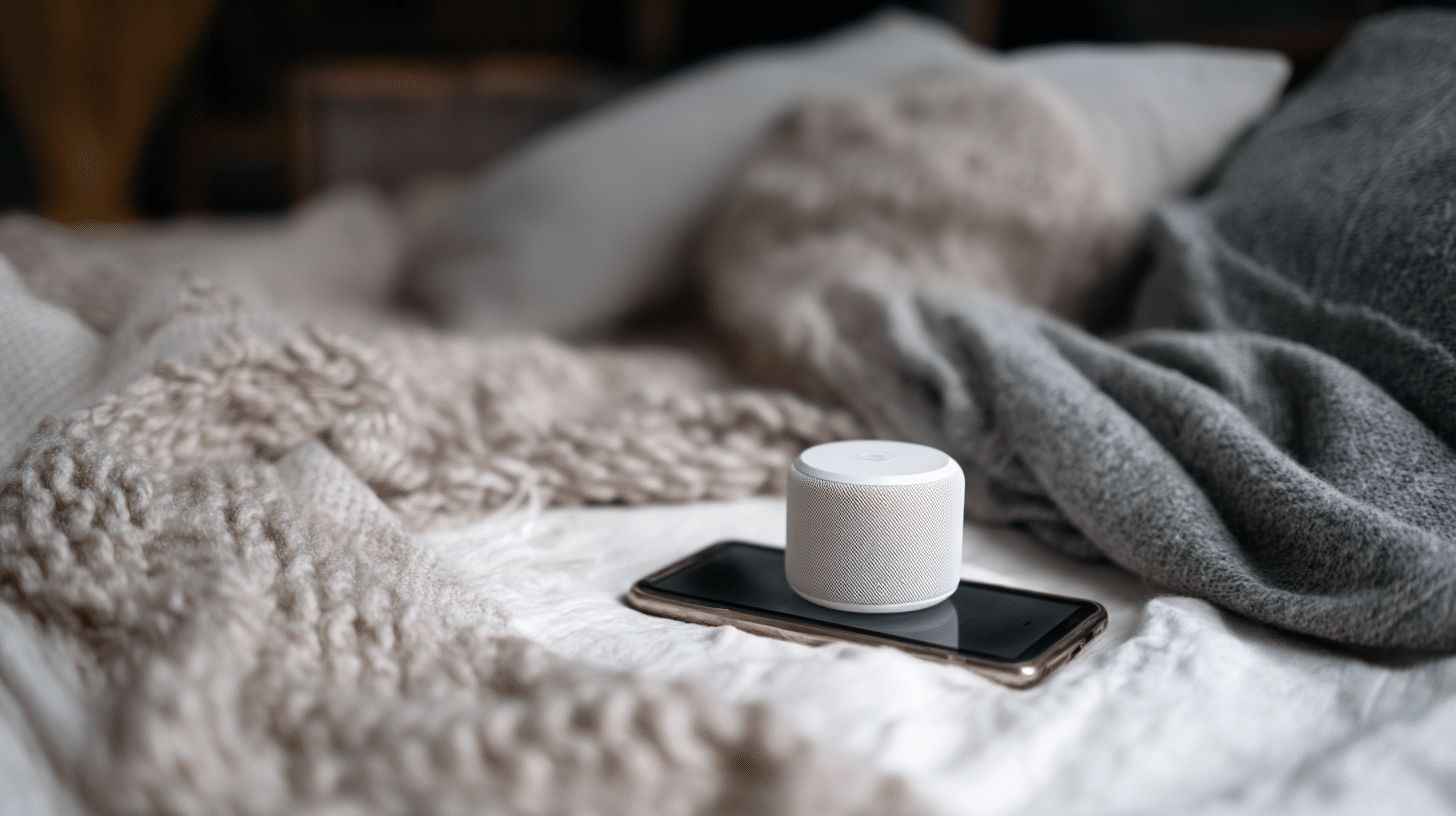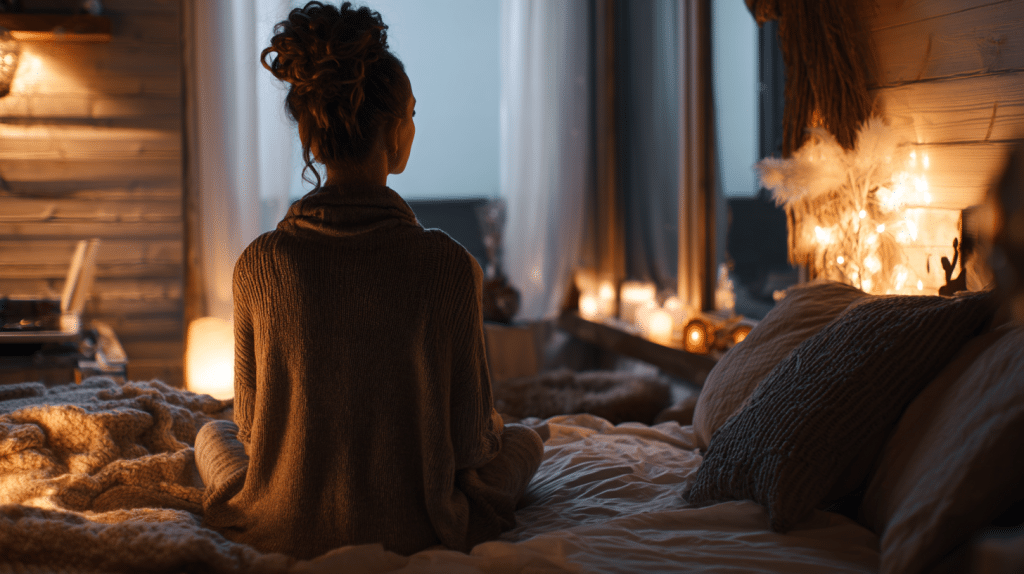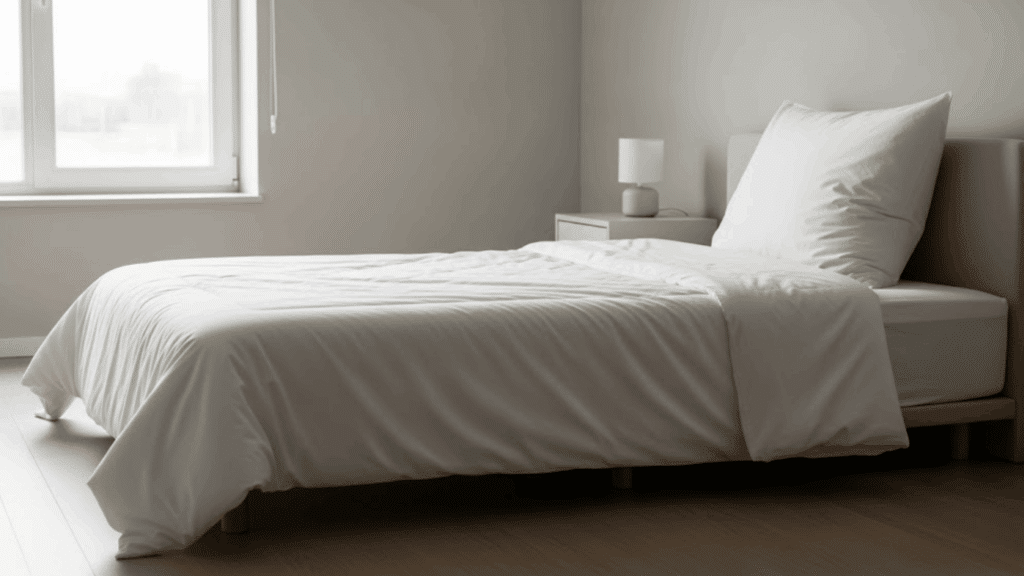Getting good sleep starts long before you actually climb into bed. Many people struggle with falling asleep because they go straight from busy daytime activities to trying to sleep without any transition time.
Common barriers like stress from work, bright screens, racing thoughts, and daily worries make it hard for your brain and body to shift into sleep mode.
The good news is that creating a simple wind-down routine can solve these problems and help you sleep better every night.
This guide will share science-based steps that anyone can use to relax and prepare for great sleep.
By the end, you’ll have a personalized nighttime routine that signals your body it’s time to rest and helps you fall asleep faster with fewer wake-ups throughout the night.
Why Does Winding Down for the Night Matter?
Creating a consistent nighttime routine sends powerful signals to your brain and body that it’s time to start preparing for sleep.
The benefits of winding down include falling asleep faster, experiencing fewer middle-of-the-night wake-ups, and enjoying better overall sleep quality.
When you consistently follow the same routine, your body learns to expect sleep and begins releasing the right hormones at the right time.
This process works with your natural circadian rhythm, which is your body’s internal clock that controls when you feel alert and when you feel sleepy.
Supporting this natural rhythm improves not just your sleep, but your long-term health and well-being too.
When and How Long Should You Wind Down?

Most sleep experts recommend starting your wind-down routine 30-60 minutes before your planned bedtime.
If you have persistent sleep issues or high stress levels, you might need up to 2 hours to fully relax and prepare for sleep.
Choose a start time that works with your schedule and stick to it every night, even on weekends when possible.
Your wind-down time doesn’t have to be complicated or long. Even 30 minutes of calm, relaxing activities can make a significant difference in how quickly you fall asleep and how well you sleep through the night.
Create a Calming Sleep Environment
Your bedroom environment plays a huge role in how well you can wind down and fall asleep. Start preparing your space at least an hour before you plan to sleep.
- Dim the lights gradually – Lower lighting tells your brain it’s time to produce sleep hormones
- Reduce noise levels – Use earplugs, white noise, or fans to block disruptive sounds
- Turn off screens – Avoid phones, TVs, and computers for at least 1 hour before bed
- Set optimal temperature – Keep your bedroom cool, ideally between 65-68°F
- Add calming scents – Try lavender essential oil or other relaxing aromatherapy
- Prepare comfortable bedding – Fresh sheets and comfortable sleepwear help you relax
The Best Activities to Wind Down Before Bed
Different relaxing activities work better for different people, so try several options to find what helps you unwind most effectively.
1. Limit Screens and Stimulants

Avoid electronics like phones, TVs, and computers before bed because the blue light interferes with your body’s natural sleep hormones.
Say no to caffeine, heavy meals, and alcohol in the late evening. Caffeine can stay in your system for 6-8 hours, while heavy meals and alcohol disrupt your sleep quality, even if they initially make you feel drowsy.
Note: If you must use devices, try blue light blocking glasses or apps that filter blue light, but complete avoidance is still the best option.
2. Deep Breathing and Relaxation Techniques

Try the 4-7-8 breathing technique: breathe in for 4 counts, hold for 7 counts, then exhale for 8 counts.
This simple method helps activate your body’s relaxation response and calm your nervous system.
You can also practice guided meditations using apps or videos, or try progressive muscle relaxation, where you tense and then relax each muscle group in your body.
Note: Start with just 5 minutes of breathing exercises – even brief practice can significantly impact your ability to fall asleep.
3. Gentle Stretches or Yoga

Light evening stretching or gentle yoga poses help release muscle tension from the day and signal to your body that it’s time to wind down.
Focus on slow, gentle movements rather than energizing or challenging poses.
Yoga nidra, also known as “yogic sleep,” is particularly effective for bedtime because it guides you into a deeply relaxed state between waking and sleeping.
Note: Avoid inverted poses or energizing sequences that might increase alertness instead of promoting relaxation.
4. Warm Bath or Shower

Taking a warm bath or shower 1-2 hours before bed helps trigger your body’s natural temperature drop that occurs before sleep.
As your body temperature falls after getting out of the warm water, it signals that it’s time to feel drowsy.
Add some Epsom salts or lavender to your bath for extra relaxation benefits. If you don’t have time for a full bath, even a 5-minute warm shower can be helpful.
Note: Keep water temperature warm but not too hot, as overheating can actually make it harder to fall asleep afterward.
5. Reading Paper Books

Reading physical books helps relax your mind without the blue light exposure that comes from screens.
Choose something calming and enjoyable rather than exciting thrillers or work-related material that might stimulate your brain.
Keep your reading material light and positive to avoid triggering stress or anxiety. Fiction, poetry, or personal development books often work well for bedtime reading.
Note: If you get too engaged in your book, set a timer to remind yourself when it’s time to put it down and sleep.
6. Journaling or Planning

Writing down your thoughts, worries, or tomorrow’s to-do list helps clear mental clutter and reduces nighttime anxiety. This “brain dump” gets racing thoughts out of your head and onto paper.
Spend 5-10 minutes writing about your day, things you’re grateful for, or concerns you want to address tomorrow.
This simple practice can significantly reduce the mental chatter that keeps many people awake.
Note: Keep your journal and pen by your bedside so you can quickly jot down any worries that pop up after you’re already in bed.
7. Calming Audio

Play soft, ambient music, sleep stories, or white noise to create a soothing environment that drowns out distracting sounds. Choose audio content specifically designed for relaxation and sleep.
Many apps offer guided sleep meditations, nature sounds, or bedtime stories for adults. Experiment with different types to find what works best for helping you drift off peacefully.
Note: Use a sleep timer on your device so the audio automatically turns off after you fall asleep, preventing it from disturbing your rest later.
8. Herbal Tea and Light Snacks

Sip non-caffeinated herbal teas like chamomile, passionflower, or valerian root, which have natural calming properties. The warm liquid and ritual of drinking tea can be soothing in itself.
If you’re slightly hungry, have a very light snack that won’t disrupt your digestion. Good options include a small banana, a handful of nuts, or a piece of whole-grain toast with a little honey.
Note: Finish eating and drinking at least 30 minutes before bed to avoid nighttime bathroom trips that could disrupt your sleep.
Sample Step-By-Step Bedtime Routine
Here’s a simple routine you can adapt to fit your schedule and preferences. Start with this basic framework and adjust the activities and timing to work best for your lifestyle.
| Time Before Bed | Activities | Purpose |
|---|---|---|
| 60 minutes | Set a reminder, finish work tasks, and dim the lights | Start the transition from day to night |
| 45 minutes | Tidy up the space, prepare the bedroom, and change clothes | Create a calm environment and get ready |
| 30 minutes | Take a warm bath/shower, and gentle stretching | Relax muscles and lower body temperature |
| 20 minutes | Read a paper book, calming music, or journaling | Quiet the mind and clear thoughts |
| 10 minutes | Deep breathing, meditation, or visualization | Final relaxation while lying in bed |
| Bedtime | Go to sleep at a consistent time every night | Maintain your body’s natural sleep rhythm |
Troubleshooting Common Sleep Problems
If you’re still having trouble sleeping despite following a wind-down routine, try these additional strategies to address specific issues.
For stress and racing thoughts:Use progressive muscle relaxation or visualization techniques where you imagine yourself in a peaceful, calming place.
For shift work or travel: Focus on the most effective wind-down activities that you can do anywhere, like deep breathing, gentle stretches, and avoiding screens.
For persistent insomnia: If sleep problems continue for more than a few weeks despite good sleep habits, consult a healthcare provider or sleep specialist for professional guidance.
Conclusion: Building Your Perfect Bedtime Routine
Winding down for the night with a regular, intentional routine is the foundation of healthy, restorative sleep.
Building the best bedtime routine takes some experimenting to find what works for you, but consistency is what makes it effective.
Protect this time as sacred – it’s your opportunity to care for yourself and prepare for quality sleep that affects every aspect of your health and well-being.
Remember that better sleep always starts before you climb into bed. Start with just one or two activities tonight and gradually build your perfect wind-down routine.
Share in the comments which wind-down activity works best for you – your experience might help other readers find their perfect bedtime routine!
Frequently Asked Questions
How Long Should My Wind-Down Routine Take?
Most people benefit from 30-60 minutes of wind-down time, though those with severe sleep issues may need up to 2 hours.
What If I Don’t Have Much Time Before Bed?
Even 10-15 minutes of calming activities like deep breathing or gentle stretching can help signal your body it’s time to sleep.
Should I Follow the Same Routine Every Night?
Yes, consistency helps train your body’s internal clock and makes your routine more effective over time.





